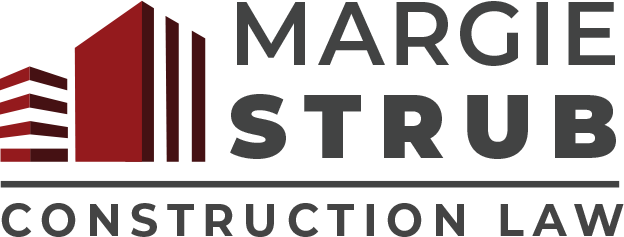Prompt payment on P3 projects: a gap in the Construction Act
Ontario’s prompt payment system under the Construction Act (the “Act”) has changed the way that parties to construction projects understand their payment obligations. But when it comes to public-private partnership (“P3”) projects (also known as alternative financing and procurement or AFP projects), the language of the Act produces significant legal uncertainty that many parties involved in P3 projects are likely not even aware of – and that urgently demands a change to the Act’s regulations. Absent such a change, prompt payment will not apply, or will apply unevenly, to the construction phase of P3 projects.
Trigger for prompt payment obligations
The triggering event for prompt payment obligations is the giving of a “proper invoice.” It is only once a proper invoice is given that the payment deadlines in sections 6.4 to 6.6 are triggered.
Section 6.1 of the Act defines a proper invoice as “a written bill or other request for payment…under a contract”, and section 6.3 provides that proper invoices are “given to an owner.” As proper invoices are given by a contractor to an owner, the identity of the contractor and the owner matters – as does the way that funds flow on a P3 project.
Structure of a P3
On a P3 project, the provincial Crown (or a municipality) (often known as the “Contracting Authority”) will enter into a “Project Agreement” with a “Project Co”, which is typically a special-purpose entity formed for the project by the operating companies which will carry out the construction.
For a P3 in which Project Co is required to design, build, finance and maintain a project, Project Co will then typically enter into a series of contracts: a lending agreement to secure financing; a design-build “Construction Contract” with the “Construction Contractor” for the design and construction, and a maintenance contract with “Maintenance Co” for the long-term maintenance of the project. These contractual arrangements will vary depending on the precise scope of the P3; for instance, Project Co may also be required to operate the project over the long term, or there may be no maintenance component at all.
The key feature of P3 is that the private sector is responsible for financing a significant part of the cost of construction, and it recovers that cost (and can repay its lenders) only upon contractual “Substantial Completion” of the project (which is not the same as substantial performance under the Act). At the outset of a P3 project, Project Co, through its lenders, is typically financing all of the cost of construction. As Project Co hits certain milestones, the Contracting Authority will make milestone payments, and in the later stages of the project the Contracting Authority will start to contribute more of the cost of construction. The proportion will vary from one monthly draw to the next and will depend on the progress achieved.
This variability has significant consequences for the prompt payment system.
Owner and contractor on a P3
The Act specifies the identity of the owner and contractor on P3 projects. Section 1.1(2) of the Act provides that, except as provided in section 1.1, the Project Agreement between the provincial Crown (or a municipality) and Project Co is a contract, and the Construction Contract between Project Co and the Construction Contractor is a subcontract.
Section 1.1(5) creates an exception to the rule set out in section 1.1(2). It deems Project Co to be the owner, and the Construction Contractor to be the contractor, for the purpose of a number of specified sections (none of them having to do with prompt payment).
Importantly, section 1.1(5)(6) also provides that this exception applies to “Any other portion or provision that may be prescribed” by regulation. Section 88(1)(c) explicitly provides that Lieutenant Governor in Council may make regulations respecting section 1.1(5), but no such regulations have yet been made.
Invoicing and prompt payment on a P3 project
As a result of the unique financing arrangements on the P3 project, in many months there will be no invoices given by Project Co to the Contracting Authority – rather, Project Co will submit draws to its lenders.
Project Co’s lenders are not “owners” as defined by the Act: under section 1(1) of the Act, an owner is a person “having an interest in a premises at whose request…an improvement is made to the premises”. Project Co’s lenders will secure their loans with the assets of the operating/parent companies involved in the project, but the lenders will not take a security interest in the project lands; and it is the Contracting Authority, not the lenders, which makes the request for the improvement.
Recall that, under section 6.3, proper invoices are requests for payment which are “given to an owner.” As the draws between Project Co and the lenders are not given to an owner, they are not “proper invoices” within the meaning of the Act.
Under section 6.4, prompt payment obligations start to flow when an owner receives a proper invoice: the Act then requires that, subject to a notice of non-payment, “an owner shall pay the amount payable under a proper invoice no later than 28 days after receiving the proper invoice from the contractor.” (Emphasis added.) Sections 6.5 and 6.6 flow these prompt payment obligations down the construction pyramid.
As Project Co’s draws to the lenders are not proper invoices, the monthly invoicing by Project Co in the first phases of a P3 project will not trigger the prompt payment system. This will likely come as a surprise to the many subcontractors expecting prompt payment throughout the construction of P3 projects in accordance with the Act’s timelines.
Just as problematic is the mixture of payment streams which occurs later in a P3 project. There will be months when some funds received by Project Co come from the owner (the Contracting Authority), and others from the lenders. Under section 6.5(1), the contractor (Project Co) must, after receiving payment from the owner, “pay each subcontractor who supplied services or materials under a subcontract with the contractor that were included in the proper invoice the amount payable to the subcontractor.” (Emphasis added.) How is Project Co to determine which services or materials were “included in the proper invoice”, and which were included in a draw to the lenders?
Even more vexingly, how are the Construction Contractor and its subcontractors to make this determination in respect of their prompt payment obligations? The Construction Contractor’s subcontractors will have no visibility into the invoicing and financing arrangements at the Project Co level.
This produces enormous uncertainty and uneven outcomes in prompt payment on a P3 project, including a lack of certainty about when notices of non-payment must be given, or what claims for payment they must be given in respect of.
It cannot have been the intention of the Legislature in enacting a prompt payment scheme that it would apply to some but not all of the construction phase of a P3 project, or that it would apply in respect of some but not all of the payments made in a given month.
Fixing prompt payment on P3s
It seems clear that this is an unintentional gap in the Act. Fortunately, the solution is simple and requires only a change to the regulations, not to the Act.
Recall that section 1.1(5)(6) of the Act provides that Project Co is deemed to be the owner for the purpose of “Any other portion or provision that may be prescribed.”
The provincial cabinet need only pass a regulation prescribing that Project Co is deemed to be the owner for the purpose of Part I.1 of the Act (the prompt payment provisions).
Then, the monthly invoice from the Construction Contractor to Project Co would be a “proper invoice.” It would not matter how Project Co funded the payment of the Construction Contractor’s proper invoices – whether from its lenders or from the Contracting Authority. Payment of the Construction Contractor’s proper invoices would then trigger the prompt payment provisions down the construction pyramid, in respect of the full amount invoiced by the Construction Contractor each month.
Many of the major P3 projects currently ongoing – such as the Eglinton Crosstown, Finch West and Hazel McCallion LRT lines – are governed by the Construction Lien Act and not subject to prompt payment. But as major new P3s are now underway or in procurement, it is essential for the industry that the regulations be amended, sooner rather than later.



